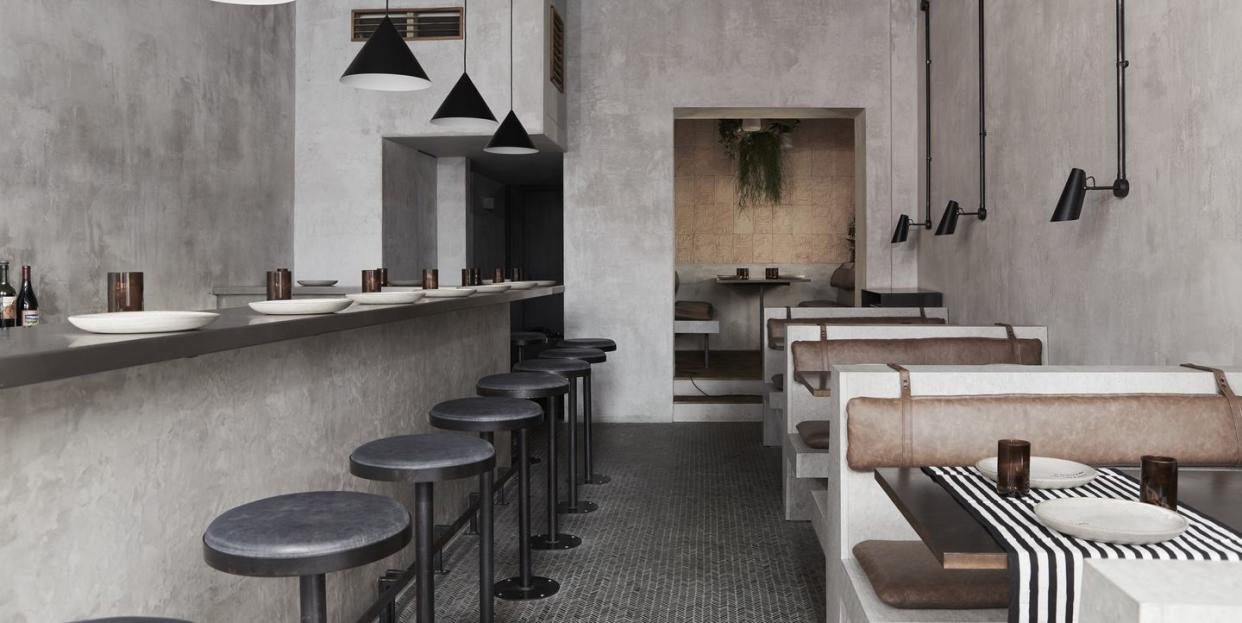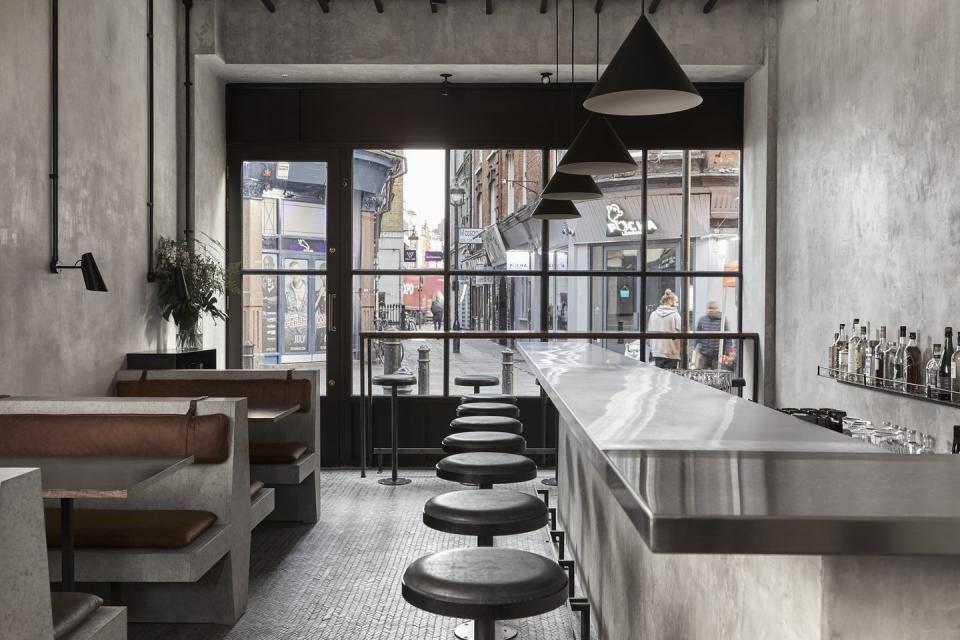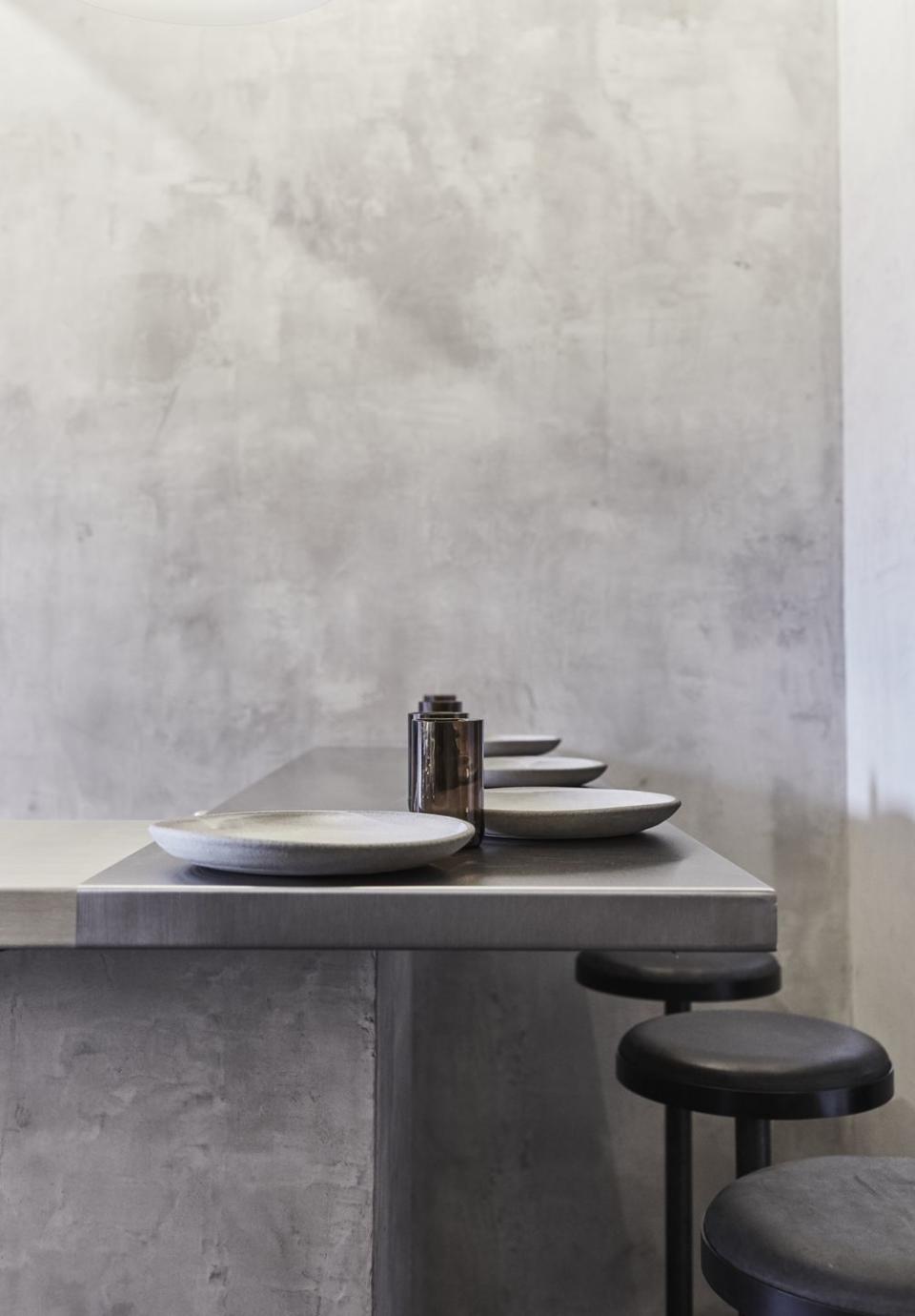Step into the 'tropical brutalism' of Soho's new restaurant Paradise

Restaurateur Dom Fernando has transplanted his Sri Lankan supperclub format to a sleek permanent home on London’s Rupert Street, with head chef – and Colombo native – Charith Priyadarshana taking up residence in the kitchen.

Tasked with the outfit was British woodworker and designer Dan Preston, who counts youthful London eateries KILN, Brat and The Smoking Goat among his most high-profile collaborations. Furniture from Preston’s Haggerston studio, including concrete banquettes softened by leather cushioning, call to mind the pioneering modernism of Sri Lankan architect Geoffrey Bawa – he was, says Fernando, a direct inspiration. ‘The space is inspired by the lines, tones and materials of brutalist architecture,’ he explains, before disputing the notion that concrete is synonymous with coolness. ‘We wanted the backdrop to be approachable, warm and sophisticated’.

Tactile pieces by a bevy of British artisans are on hand to do just that. Handmade clay tableware was sourced from Brixton-based husband-and-wife team Sofia Ceramics, who decorated each piece with Sinhala and Tamil script. While organic stoneware is made by Jo Marland in her Shoreditch studio. Black and white table runners, which supply an (admittedly restrained) pop of pattern to the restaurant’s booths, are hand-woven batiks crafted in Sri Lanka. The amber water glasses, too, once called the country home – they’re actually hand-polished, recycled Lion beer bottles. Yet it’s the muted concrete shell, courtesy of Dan Dixon-Spain of The Plaster Collective, that amplifies the luxe-industrial space. ‘The food provides all the colour we need’, quips Fernando.

The food is centred on vibrant speciality fruits, vegetables and spices imported from Sri Lanka. Vegans (and vegetarians) are more than well catered for; plant-based dishes quietly claim roughly half of the menu, and options like stir-fried cabbage and coconut mallum or fried aubergine and jaggery moju hold their own beside curries of fiery roast chicken, pork cheek and cod.
There’s also a commitment to seasonality and sustainability, and the British producers that supply the restaurant’s daily intake of sustainably sourced fish, lamb, pork and eggs are reassuringly namechecked online. Crowd-pleasing hoppers, with either egg or curry leaf, plus sambols and ‘short eats’ such as mutton shoulder rolls with fermented chilli, round out the menu alongside a Sri Lankan-inspired cocktail list.

Perching at the L-shaped bar is fine (and your only option if you’ve arrived as a pair) but it’s the recess at the far end, clad with earthy botanical tiles in hand-pressed clay by star ceramicist Reiko Kaneko and hung with lush greenery, that provides the most coveted dining spot. Affectionately named ‘the snug’, it feels separate but still a part of the convivial mood that Fernando aims to capture. ‘There’s a spirit about Sri Lanka,’ he tells us. ‘We wanted to blend the lively dynamic from the bistros of Galle and Colombo with the energy of Soho’. Though the area is undoubtedly well-saturated with places to dine, the restaurant’s striking, raw concrete interior, alongside Priyadarshana’s fiery, authentic Sri Lankan fare, is a persuasive prospect. The supperclub circuit’s loss is Soho’s gain. paradisesoho.com

 Yahoo News
Yahoo News 
